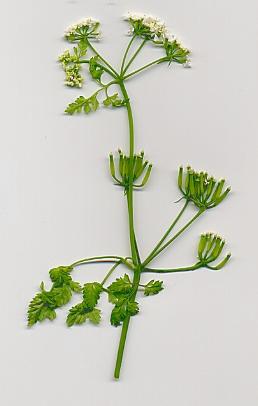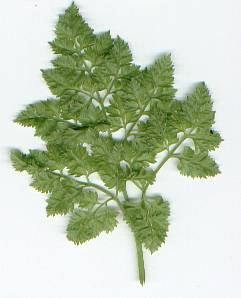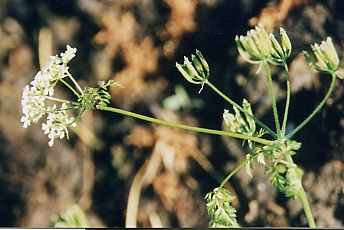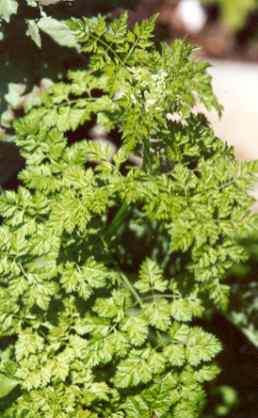
|
| Chervil plant |
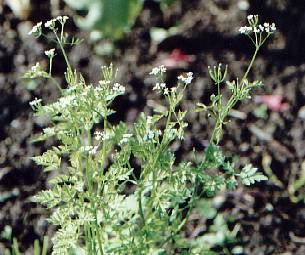
|
| Flowering chervil (with unripe fruits) |
Chervil is one of the five components of the French fines herbes, a composition of fresh herbs used in France for decoration of cold and warm dishes (see chives). Lastly, fresh leaves frequently appear in bouquet garni (see parsley), although their fragrance does not tolerate long cooking periods very well.
The dried herb is less aromatic than the fresh, but many compositions of the French herbes de Provence contain dried chervil (see lavender).
In North European countries, chervil is often substituted by a related herb, cicely or Spanish chervil, which has a stronger, anise-like aroma.
